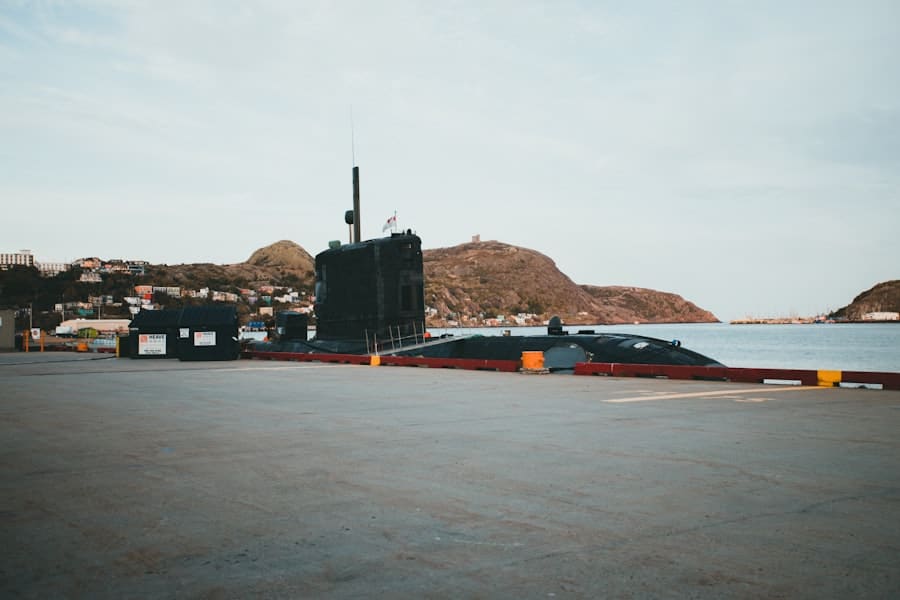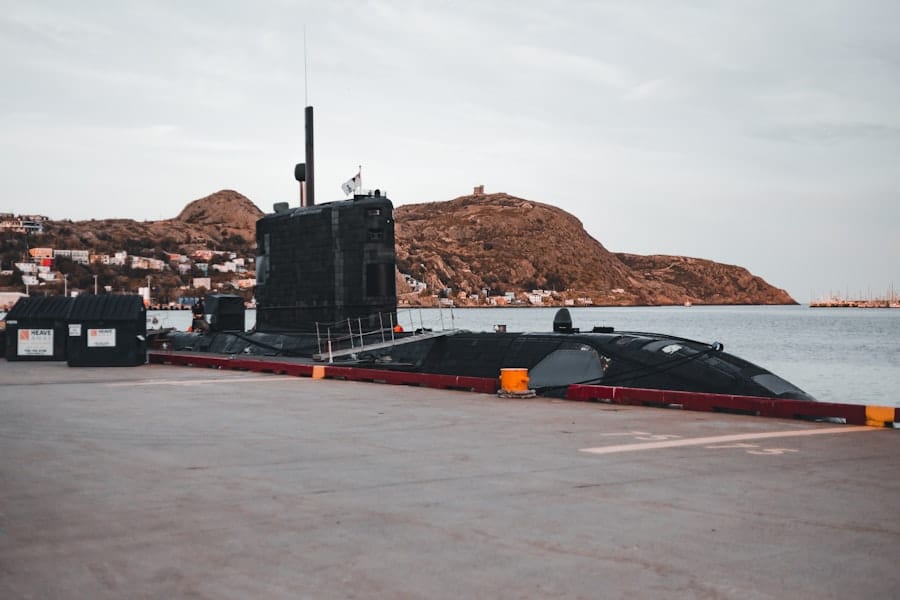The journey of autonomous submarines began in the mid-20th century, primarily driven by military interests and the need for underwater reconnaissance. The early prototypes were rudimentary, often resembling torpedoes more than the sophisticated vehicles we see today. These initial designs were limited in their capabilities, primarily focusing on basic navigation and data collection.
However, as technology advanced, so did the complexity and functionality of these underwater vehicles. The introduction of microprocessors and advanced sensors in the 1980s marked a significant turning point, allowing for greater autonomy and the ability to perform more complex tasks without direct human intervention. By the late 1990s and early 2000s, the development of autonomous underwater vehicles (AUVs) gained momentum, spurred by both military and civilian applications.
The U.S. Navy’s development of the REMUS (Remote Environmental Monitoring UnitS) AUV showcased the potential for these vehicles to conduct long-range missions with minimal human oversight. This period also saw the emergence of various research institutions and private companies entering the field, leading to a diversification of designs and capabilities.
The evolution of autonomous submarines has been characterized by a continuous push towards greater autonomy, enhanced data-gathering capabilities, and improved operational efficiency, setting the stage for their current applications in deep-sea exploration.
Key Takeaways
- Autonomous submarines have evolved from being remotely operated to fully autonomous, with the ability to navigate and make decisions on their own.
- Autonomous submarines play a crucial role in deep-sea exploration by collecting data, mapping the ocean floor, and studying marine life in areas that are difficult for humans to reach.
- The technology behind autonomous submarines includes advanced sensors, navigation systems, and communication equipment that allow them to operate independently in the deep sea.
- Using autonomous submarines in deep-sea exploration offers advantages such as cost-effectiveness, reduced risk to human life, and the ability to collect continuous data over long periods of time.
- Challenges and limitations of autonomous submarines include limited battery life, communication difficulties in deep-sea environments, and the potential for collisions with marine life or other underwater objects.
The Role of Autonomous Submarines in Deep-Sea Exploration
Autonomous submarines have become indispensable tools in the realm of deep-sea exploration, where human divers face insurmountable challenges due to extreme pressure, low temperatures, and complete darkness. These vehicles are equipped with advanced sensors and imaging technologies that allow them to traverse the ocean depths, collecting valuable data that would otherwise be inaccessible. For instance, AUVs like the Sentry have been instrumental in mapping the seafloor and studying underwater ecosystems, providing insights into geological formations and biological communities that thrive in these harsh environments.
One notable example of autonomous submarines contributing to deep-sea exploration is their role in investigating hydrothermal vents. These underwater geysers are rich in unique ecosystems that rely on chemosynthesis rather than photosynthesis. AUVs equipped with specialized sensors can navigate to these remote locations, capturing high-resolution images and collecting samples of water and sediment.
This data is crucial for understanding not only the biological diversity present at these sites but also the geological processes that create such environments. The ability to operate autonomously allows these submarines to conduct lengthy missions without the need for surface support, significantly expanding the scope of exploration efforts.
The Technology Behind Autonomous Submarines

The technology that powers autonomous submarines is a blend of advanced engineering, robotics, and artificial intelligence. At their core, these vehicles rely on sophisticated navigation systems that utilize GPS, inertial navigation, and sonar to determine their position and orientation underwater. Unlike surface vessels, which can easily access GPS signals, AUVs must rely on inertial navigation systems (INS) that track their movements based on initial position and velocity.
This technology is complemented by sonar systems that map the seafloor and detect obstacles, enabling safe navigation through complex underwater terrains. In addition to navigation technologies, autonomous submarines are equipped with an array of sensors designed to collect various types of data. These can include multi-beam sonar for mapping, cameras for imaging, and chemical sensors for analyzing water composition.
For example, an AUV might adjust its course based on detected obstacles or change its sampling strategy if it encounters an area of interest. This level of autonomy is crucial for conducting long-duration missions in remote locations where human intervention is impractical.
Advantages of Using Autonomous Submarines in Deep-Sea Exploration
The advantages of employing autonomous submarines in deep-sea exploration are manifold. One of the most significant benefits is their ability to operate in environments that are inhospitable to humans. The extreme conditions found at great depths—such as high pressure, low temperatures, and complete darkness—pose serious risks to human divers and limit the duration of manned missions.
Autonomous submarines can endure these conditions for extended periods, allowing researchers to gather data over longer timeframes without the constraints imposed by human physiology. Moreover, AUVs can be deployed for missions that require high precision and repeatability. For instance, when mapping underwater geological features or monitoring changes in marine ecosystems, the ability to conduct multiple surveys with consistent methodologies is essential.
Autonomous submarines can follow pre-programmed routes with remarkable accuracy, ensuring that data collected over time is comparable and reliable. This capability is particularly valuable in studies related to climate change, where understanding shifts in oceanic conditions requires long-term monitoring efforts.
Challenges and Limitations of Autonomous Submarines
Despite their numerous advantages, autonomous submarines face several challenges and limitations that can hinder their effectiveness in deep-sea exploration. One primary concern is the issue of communication. While AUVs can operate independently for extended periods, they often rely on acoustic communication systems to transmit data back to surface vessels or research stations.
These systems can be slow and limited in bandwidth, making it challenging to relay large volumes of data in real-time. Additionally, underwater communication can be affected by environmental factors such as temperature gradients or background noise from marine life or geological activity. Another significant challenge is battery life and energy management.
Most autonomous submarines are powered by rechargeable batteries that limit their operational range and duration. While advancements in battery technology have improved this aspect over time, many AUVs still face constraints that necessitate careful planning of missions to ensure they can complete their objectives before returning to the surface for recharging. This limitation can restrict the depth and duration of explorations, particularly in remote areas where logistical support is difficult to arrange.
Current and Future Applications of Autonomous Submarines

Currently, autonomous submarines are employed across a wide range of applications beyond traditional deep-sea exploration. In marine research, they are used for habitat mapping, biodiversity assessments, and monitoring environmental changes due to climate impacts or human activities such as fishing or shipping. For example, organizations like Ocean Infinity utilize AUVs equipped with advanced sonar systems to conduct seabed mapping for oil and gas exploration while ensuring minimal environmental disruption.
Looking towards the future, the potential applications for autonomous submarines are expanding rapidly as technology continues to evolve. One promising area is their use in underwater archaeology. AUVs can be deployed to survey shipwreck sites or submerged ancient cities with minimal disturbance to fragile artifacts.
Equipped with high-resolution imaging systems and advanced sensors, these vehicles can create detailed maps of archaeological sites that would be difficult or impossible to access using traditional methods.
Environmental Impact of Autonomous Submarines
The environmental impact of autonomous submarines is a critical consideration as their use becomes more widespread in deep-sea exploration. On one hand, these vehicles offer a less invasive alternative to traditional methods that often involve large research vessels or manned submersibles that can disturb marine ecosystems during their operations. By minimizing surface activity and reducing noise pollution associated with larger vessels, AUVs can help mitigate some negative effects on marine life.
However, there are still concerns regarding the potential ecological footprint of deploying autonomous submarines in sensitive environments. For instance, the noise generated by AUVs can disrupt marine mammals that rely on echolocation for communication and navigation. Additionally, if not properly managed, the deployment of these vehicles could lead to unintended consequences such as habitat degradation or disturbances to delicate ecosystems like coral reefs or hydrothermal vent communities.
As research continues into the ecological impacts of AUV operations, it will be essential to develop guidelines and best practices that prioritize environmental stewardship alongside technological advancement.
The Future of Autonomous Submarines in Deep-Sea Exploration
The future of autonomous submarines in deep-sea exploration appears promising as advancements in technology continue to unfold. Innovations in artificial intelligence are expected to enhance the decision-making capabilities of these vehicles further, allowing them to adapt dynamically to changing environmental conditions or mission requirements without human intervention. This could lead to more efficient data collection processes and enable AUVs to explore previously inaccessible areas of the ocean.
Moreover, as global interest in ocean conservation grows, autonomous submarines will likely play a pivotal role in monitoring marine health and biodiversity. Their ability to conduct long-term studies with minimal human presence makes them ideal candidates for assessing the impacts of climate change on oceanic ecosystems or tracking illegal fishing activities in protected areas. As researchers continue to push the boundaries of what these vehicles can achieve, we may witness a new era of deep-sea exploration characterized by unprecedented levels of detail and understanding about our planet’s final frontier—the vast and largely uncharted depths of our oceans.
In the realm of technological advancements, the exploration of autonomous submarines in deep-sea exploration is a fascinating topic that parallels innovations in other fields. For instance, the development of specialized software plays a crucial role in enhancing the efficiency and capabilities of various industries. An article that delves into this subject is “Best Software for Small Business in 2023,” which discusses the latest software solutions designed to optimize business operations. This article can be found at Best Software for Small Business in 2023. Just as autonomous submarines are revolutionizing oceanic exploration, cutting-edge software is transforming how small businesses operate, highlighting the interconnected nature of technological progress across different sectors.
FAQs
What are autonomous submarines?
Autonomous submarines are unmanned underwater vehicles that are capable of operating independently without direct human control. They are equipped with sensors, cameras, and other instruments to collect data and perform tasks in the deep sea.
How are autonomous submarines used in deep-sea exploration?
Autonomous submarines are used in deep-sea exploration to gather data on the ocean floor, marine life, and underwater geological features. They can also be used to survey and map underwater environments, search for shipwrecks, and study hydrothermal vents and other deep-sea phenomena.
What are the advantages of using autonomous submarines in deep-sea exploration?
Autonomous submarines can operate for extended periods of time without the need for human intervention, making them ideal for long-term data collection and monitoring. They can also access remote and hazardous underwater environments that may be difficult or dangerous for human divers to reach.
What are some examples of autonomous submarines used in deep-sea exploration?
Examples of autonomous submarines used in deep-sea exploration include the REMUS (Remote Environmental Monitoring UnitS) series developed by the Woods Hole Oceanographic Institution, the Bluefin-21 developed by Bluefin Robotics, and the Nereus hybrid remotely operated vehicle developed by the Woods Hole Oceanographic Institution and the Schmidt Ocean Institute.
What are the challenges of using autonomous submarines in deep-sea exploration?
Challenges of using autonomous submarines in deep-sea exploration include the need for advanced navigation and communication systems to operate in remote and deep underwater environments, as well as the development of robust and reliable sensors and instruments to withstand the high pressures and harsh conditions of the deep sea.

